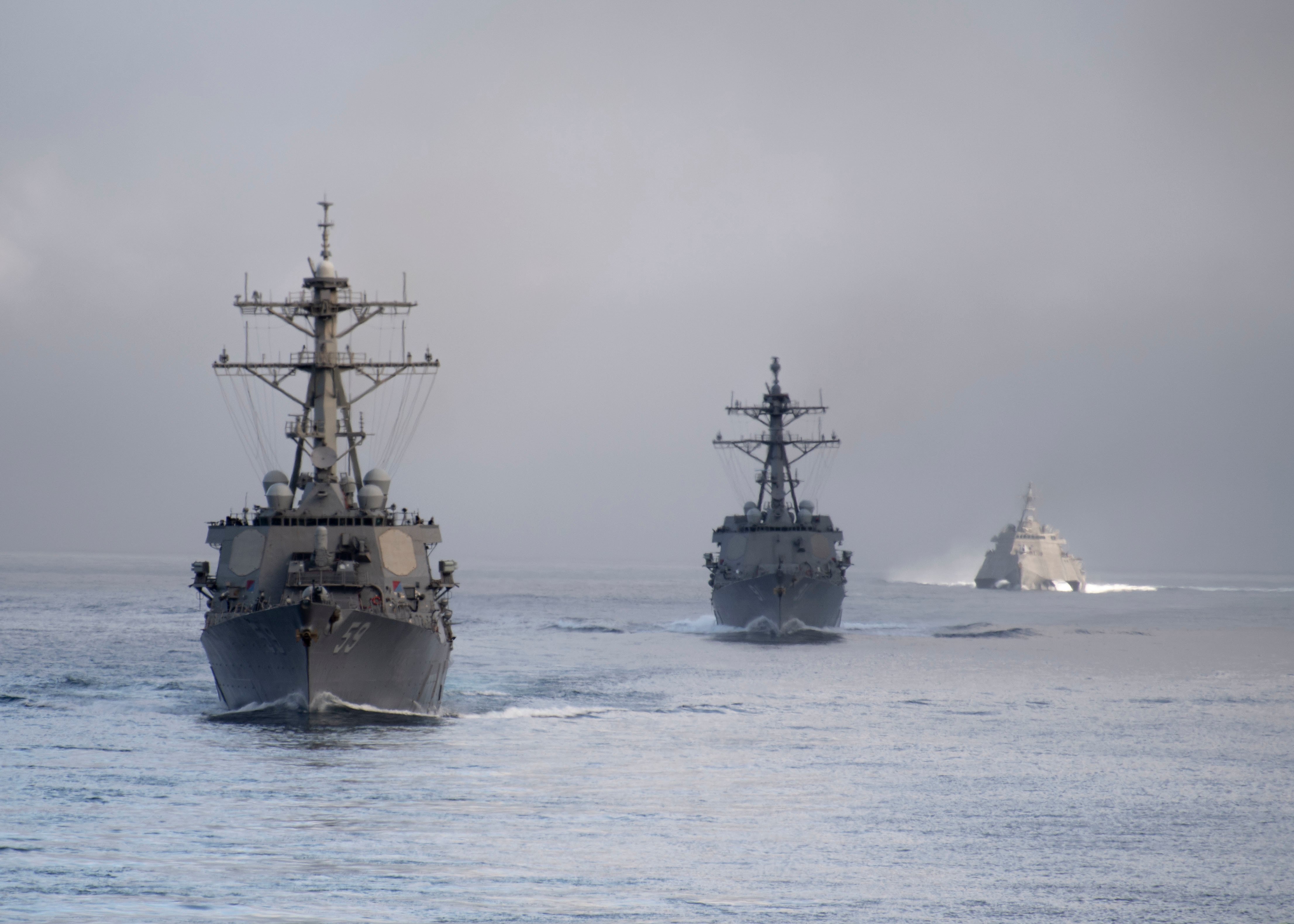
ARLINGTON, Va. – The Navy has concentrated more capability – and therefore more cost – onto a smaller number of ships, and that force design may not work well in a high-end fight against a peer adversary, the under secretary of the Navy said last week.
Thomas Modly, the number-two civilian leader of the Navy and Marine Corps and a former Navy officer who served in the 1980s, said a lot has changed between the fleet he knew during the last major naval buildup and the one he sees now during an ongoing effort to reach the 355 ships called for in legislation.
The fleet now is about half the size it was then, but the average cost per ship is double.
“Going back to the ‘80s, when we had the 600-ship Navy, the average cost of our ship in that fleet was a billion dollars, that was the average cost of all those ships. Today, our current fleet of 290, the average cost is $2 billion. And that’s in real dollars, inflation-adjusted real dollars,” he said while addressing reporters at the Military Reporters and Editors annual conference.
“So what that suggests is we’re piling a lot more capability and a lot more expense on a smaller number of platforms. Now I’m not sure, when we’re looking at a scenario where we’re dealing with a great power like China or Russia, where we’re going to have distributed responsibilities, whether that’s the right strategy for us. So we’re looking at that and examining that.”
Modly noted that the carrier strike group has always been a large expense for the Navy but that today it constitutes a much larger percentage of the bill. In the 1980s, the carrier strike group cost about 14 percent of the total Navy operating cost. Today it’s 31 percent.
“We have to think about how we reverse that trend,” he said.
The Navy has already spoken about efforts to move to a different force design. In the surface fleet especially, leaders for the past year or so have described an effort to move away from relying on large combatants like cruisers and destroyers to carry the bulk of the capability and take on the bulk of the missions, and instead rely more on small combatants like the Littoral Combat Ship or the frigate, as well as unmanned ships, to carry a larger load.
Modly said that, as the service looks at where to invest and divest its money going forward, he’s supportive of the LCS and frigate because they are flexible and agile – and cost a billion apiece or less – whereas he said a $13-billion carrier is harder to sustain in the budget in the long-run.
Generally, he called the 355-ship goal, based around 12 carrier strike groups, a “very aggressive goal” that would be hard to meet or sustain.
“If you look at what it would take to do that – and we laid this into our 30-year shipbuilding plan – it’s going to be very, very difficult for us to do that, A) based on that force structure, and B) based on the budget and top line. So we’re all sort of coming to this realization now that there’s a math problem that we need to try to solve, and we have to be creative about how we’re going to solve it,” Modly said.
“First of all, is the number 355 the right number? I don’t know. I suspect it’s probably more, it probably needs to be more than that – but the way we define a battle force ship, we probably have to think about that differently as well. As technology advances and we have the ability to have fairly large unmanned platforms out there that have significant lethality, do we include them in our ship force count? So we have to take a really hard look at what 355 means, if it’s the right number, does it even matter what the number is, and what are we investing in for the future.”





